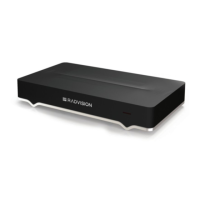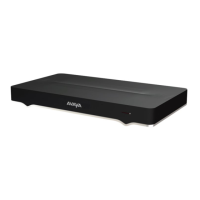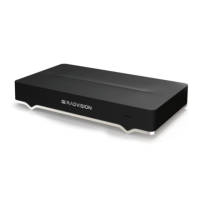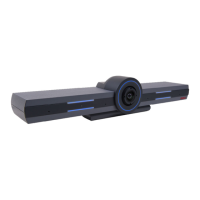Connections > Monitor > General. From the endpoint's main menu, select Configure >
Advanced > I/O Connections > Monitor > General.
Related links
Configuring Advanced User Settings on page 90
Enabling and Configuring Recording
About this task
You can record meetings to a locally connected USB storage device or the network. When
recording to a USB device, you can also save the locally recorded files to an external server for
back-up (if your system administrator has configured one). This procedure describes how to
configure your recording preferences, such as where to record meetings. When recording
meetings to the USB device, you can also define the video resolution and bitrate. This is useful,
for example, to increase the time available for recording by saving disk space. You can also stamp
the video with the date and time and you can add an additional label to help you to easily
recognize the recording context.
You can view recordings from the local USB storage device either on the XT Series or using any
standard media player. The system saves the file as an MP4, and records the video in H.264
format with audio in AAC-LC format. You can view recordings saved to the network via the Avaya
Equinox
®
Unified Portal (see Using Avaya Equinox
®
Unified Portal).
If using a USB device to record a videoconference hosted by your built-in MCU, up to six remote
endpoints can join the meeting (if your license is MCU 9). If your license is MCU 4, up to three
remote endpoints can join. If more remote endpoints already joined, you cannot start a recording.
If you choose to configure the FTP storage, the XT Series copies the recorded file to an external
FTP server, configured as back-up storage. You can use the Avaya Equinox
®
Streaming and
Recording Server or a generic FTP server as the external FTP server. You can encrypt the
transfer of the recorded files for added security. As soon as you configure the Save to External
Server feature, the next recorded files will be copied automatically to the external server once the
recording ends. The process of saving a recorded file to an external server could require some
time to complete, depending on the duration of your recorded session and the speed of your
network connection. Typical transfer time for 4GB file (size of a recorded session of 5 hours at
2048K, 1080p) is around 30 minutes. During the file transfer you can monitor the progress of a file
transfer, represented by a blue bar over the file preview in the playback page. A special icon is
also shown in the XT Series GUI title bar to indicate that the transfer is still in progress. If you shut
down the XT Series or unplug the USB key while a file transfer is in progress, the transfer will be
interrupted and you will need to restart it manually from the XT Series Web interface. A special
icon over the file will show that the transfer failed.
The XT Series GUI and the XT Series Web interface show the file transfer status (successfully
saved or interrupted/failed) for the last 100 transferred files. You can manually clear the saved files
information from the Web interface by clicking Clear Transfer Status.
If the file transfer succeeds, the recorded file is marked as successfully transferred.
To disable recording and playback, follow the procedure below to access the recording settings,
and select No Recording in the Location field.
Configuring Advanced User Settings
June 2019 Avaya IX Video Conferencing XT Series User Guide 92
Comments on this document? infodev@avaya.com

